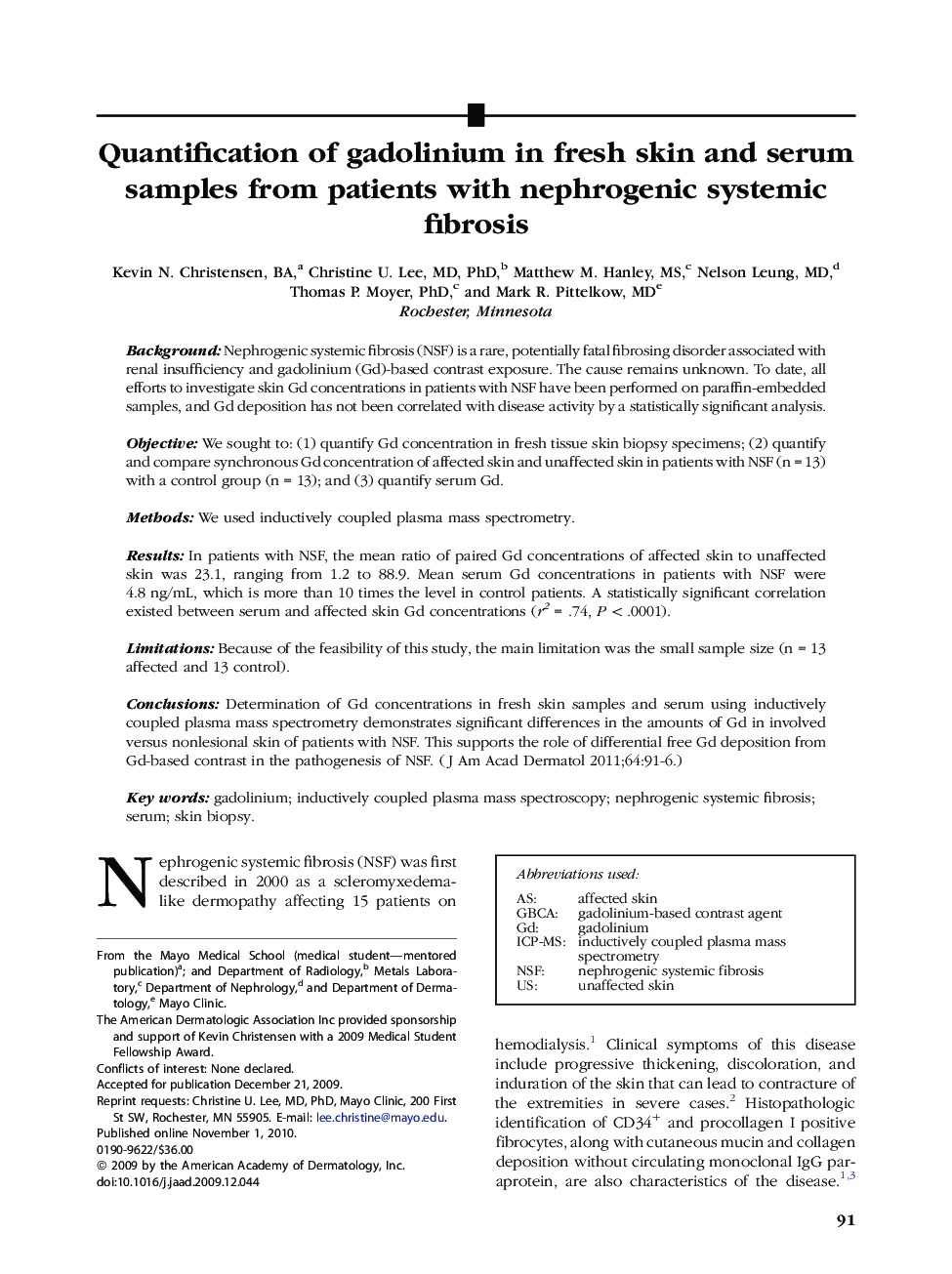| کد مقاله | کد نشریه | سال انتشار | مقاله انگلیسی | نسخه تمام متن |
|---|---|---|---|---|
| 3207922 | 1587586 | 2011 | 6 صفحه PDF | دانلود رایگان |

BackgroundNephrogenic systemic fibrosis (NSF) is a rare, potentially fatal fibrosing disorder associated with renal insufficiency and gadolinium (Gd)-based contrast exposure. The cause remains unknown. To date, all efforts to investigate skin Gd concentrations in patients with NSF have been performed on paraffin-embedded samples, and Gd deposition has not been correlated with disease activity by a statistically significant analysis.ObjectiveWe sought to: (1) quantify Gd concentration in fresh tissue skin biopsy specimens; (2) quantify and compare synchronous Gd concentration of affected skin and unaffected skin in patients with NSF (n = 13) with a control group (n = 13); and (3) quantify serum Gd.MethodsWe used inductively coupled plasma mass spectrometry.ResultsIn patients with NSF, the mean ratio of paired Gd concentrations of affected skin to unaffected skin was 23.1, ranging from 1.2 to 88.9. Mean serum Gd concentrations in patients with NSF were 4.8 ng/mL, which is more than 10 times the level in control patients. A statistically significant correlation existed between serum and affected skin Gd concentrations (r2 = .74, P < .0001).LimitationsBecause of the feasibility of this study, the main limitation was the small sample size (n = 13 affected and 13 control).ConclusionsDetermination of Gd concentrations in fresh skin samples and serum using inductively coupled plasma mass spectrometry demonstrates significant differences in the amounts of Gd in involved versus nonlesional skin of patients with NSF. This supports the role of differential free Gd deposition from Gd-based contrast in the pathogenesis of NSF.
Journal: Journal of the American Academy of Dermatology - Volume 64, Issue 1, January 2011, Pages 91–96